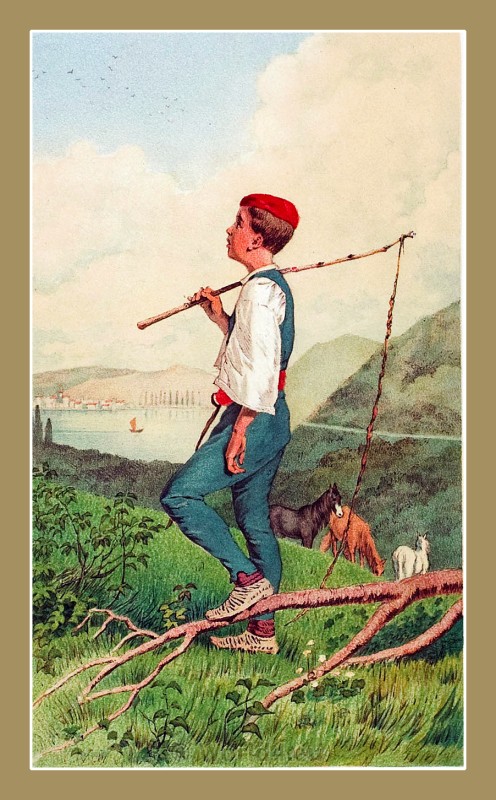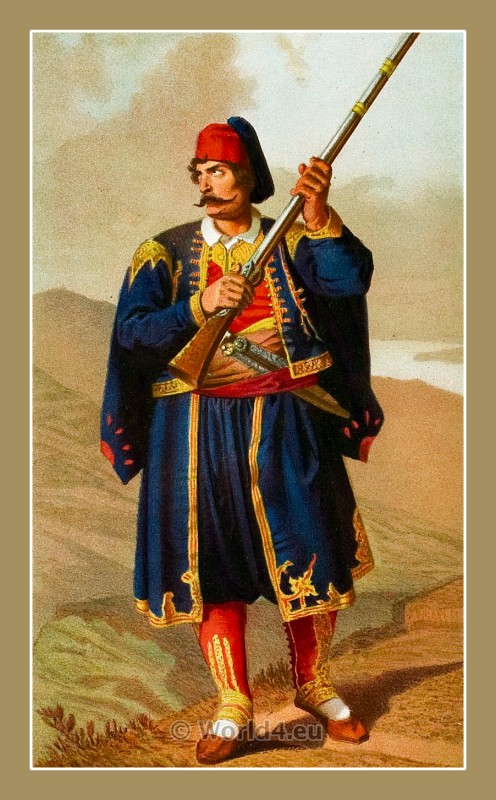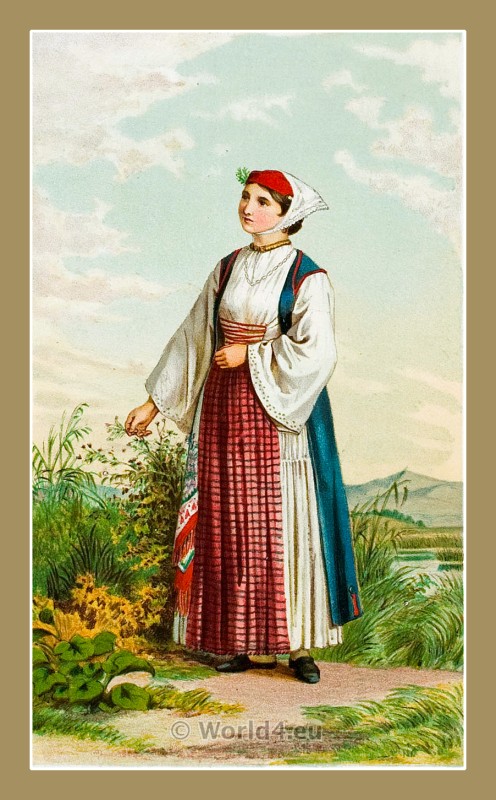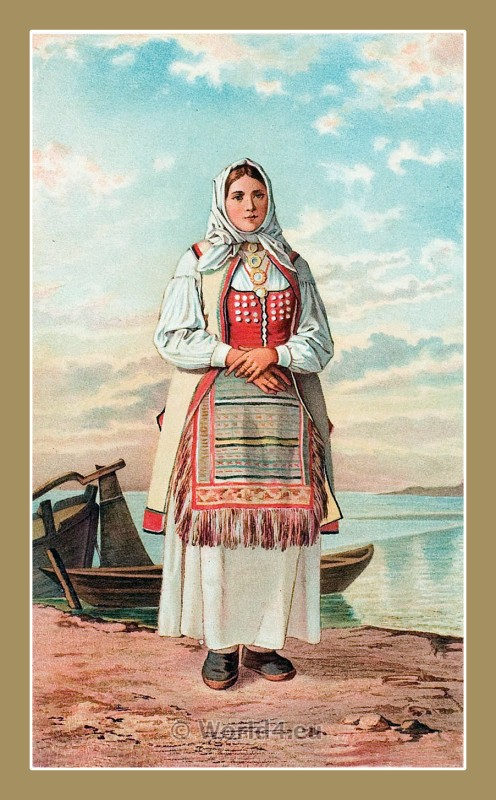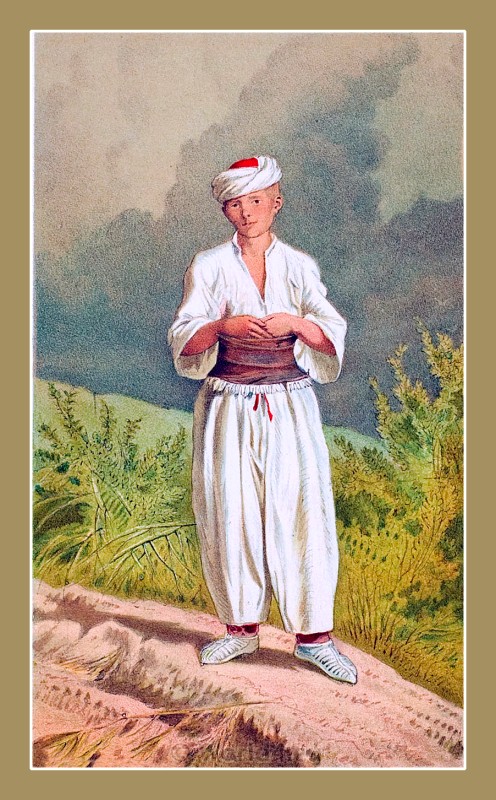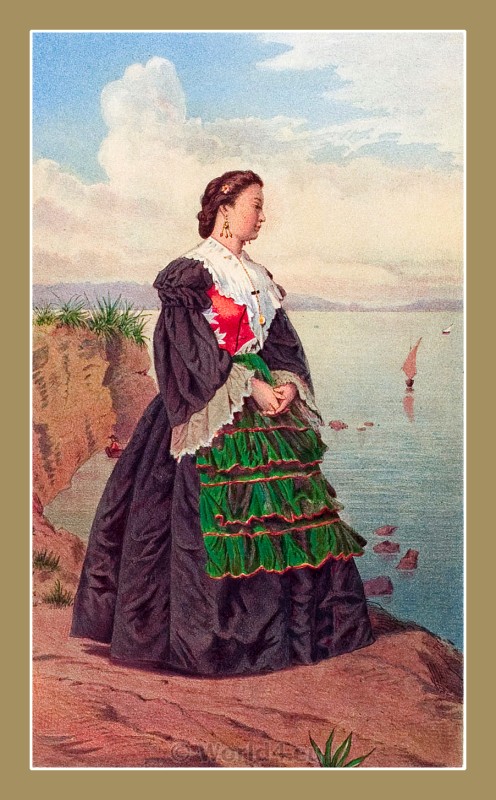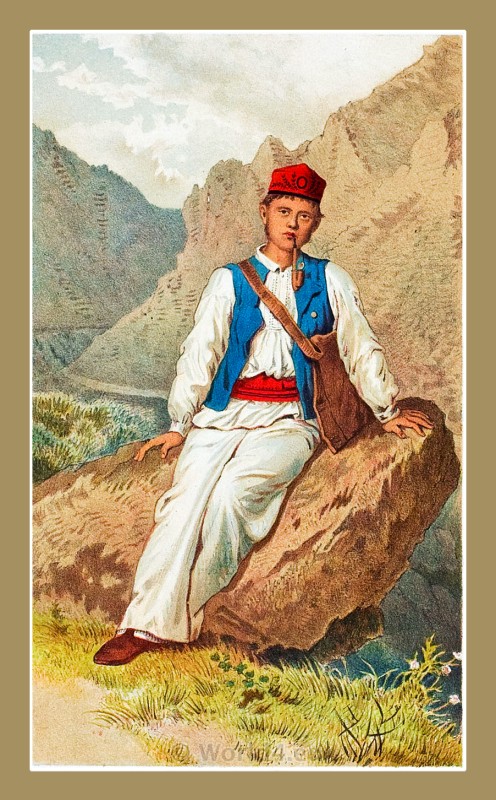
Traditional costume Senj Croatia in 1870.
(MUŠKA NOŠNJA IZ SENJSKE OKOLICE)
Senj (Latin Senia or Segnia, German Zengg, Italian Segna) is a town in Croatia, in the county Lika-Senj. It is the oldest town of the Upper Adriatic. The most famous monument of Senj is the fortress Nehaj, medieval center of the Uskoks.
The town has existed for over 3000 years, making it one of the oldest settlements on the Croatian Adriatic coast. In Roman times, Senia was an important centre and municipium of the province of Liburnien, as evidenced by numerous archaeological finds.
From the settlement of the Croats until the 12th century, it was part of the parish of Gacka and in 1271 came into the possession of the princes of Krk and Vinodol from the Frankopan family. In 1469 it became a free royal town and the seat of the capitánate of the Croatian military border. From 1527 to 1689 it was the seat of the Senj Uskoks. After the liberation of the Lika region from the Ottomans, the trade and seafaring boom in Senj was revived.
The ports of Rijeka, Senj, Bakar and Kraljevica have long fought each other for their importance as main ports. When Rijeka was connected to the railway network in 1873, Senj lost its importance and competition – Senj was bypassed by the railway. As a result, most of the goods traffic came to a standstill and people emigrated from Senj. It successfully established a timber industry.
Many personalities of Croatian history, who are important not only for the life and culture of this city, but also for the entire Croatian people, were born here; or they came to Senj during their school years: the local grammar school is regarded as the best and most famous grammar school in Croatia since its foundation.
Source: The Serbs in the Adriatic. Their types and costumes. Published 1870-1878. Brockhaus Leipzig Germany.
Discover more from World4 Costume Culture History
Subscribe to get the latest posts sent to your email.

